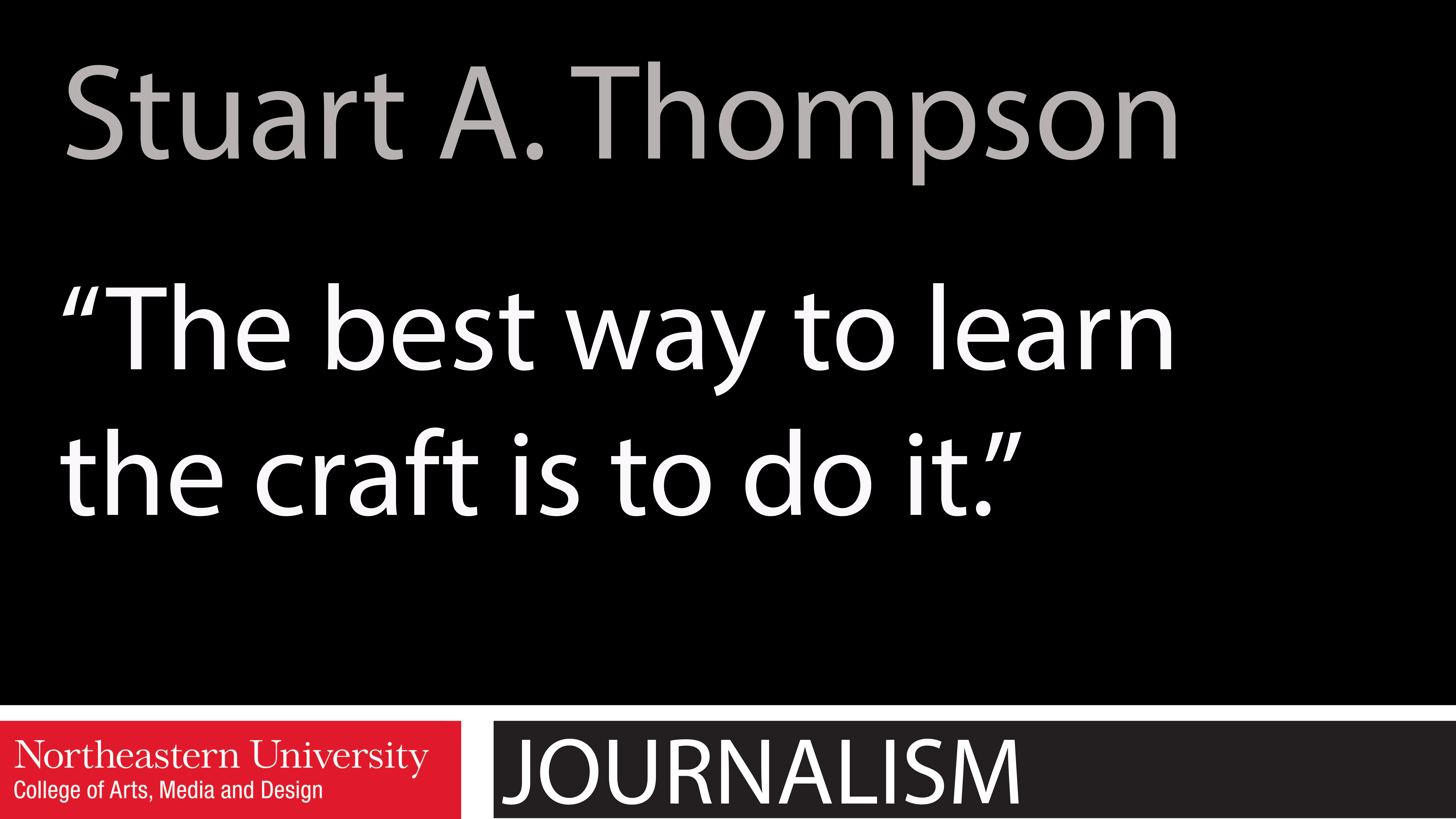The New York Times’ Stuart A. Thompson on opinion writing and making a career in journalism
Even during this golden age of technology, many journalists struggle to find a place for technology within print stories. The New York Times did just this, publishing an opinion piece on Jan. 26 which featured audio bytes in place of quotes – making the story an interactive and immersive experience.
The piece is a first-person account of three weeks spent inside a QAnon audio chat room, written by Stuart A. Thompson, a New York Times opinion writer and editor. Thompson spoke at “Pizza, Press & Politics,” a weekly speaker series sponsored by the Northeastern University Journalism School, where he shared expertise and spoke about how he defined writing opinion pieces.
“Opinion is really kind of like its own publication,” said Thompson, a distinction he feels is often lost. While opinion writers and news reporters may cover the same stories or problems, opinion writers are able to make assumptions or data-supported analyses about a subject, while the news reporters may not feel as comfortable doing so, he explained.
Early in his career as an opinion writer, Thompson said he was surprised to find that opinion writing is not just, “ ‘Oh I think this and I think that.’ The opinion is … not what I thought it was. It’s a little bit more of your analysis and interpretation of events that are true,” the Pulitzer Prize winner said.
While accepting questions from an audience of student journalists, Thompson offered advice on landing a job at an institution like the New York Times. He noted the rising importance of coding, data, and content visualization skills in the field of journalism. To those looking to learn more about the technological side of journalism, Thompson encouraged students to start small and not stress too much about the software.
“If you do a piece and use a Google Spreadsheet chart to represent some data, that is totally fine,” he said.
Thompson also stressed the importance of newspaper experience for writers and editors.
“The best way to learn the craft is to do it, and I probably learned more at the student newspaper than in any of the journalism classes I had,” he said, laughing as he acknowledged the journalism professors on the Zoom call.
Touching on his experience working on the Times opinion desk, Thompson said: “It is very low-ego, high-excitement and collaboration. The Times is weirdly a relaxed place to work.”
Additionally, in the process of writing the QAnon piece, Thompson said he had to consult the legal and standards team, which worked with him to ensure there were no unethical or illegal issues.
“[The New York Times] will just trust you will do a good job, until you screw up, I guess,” Thompson said.





